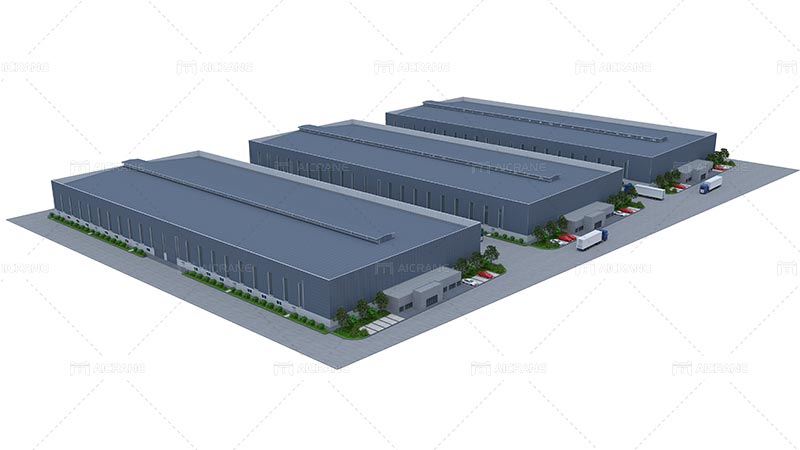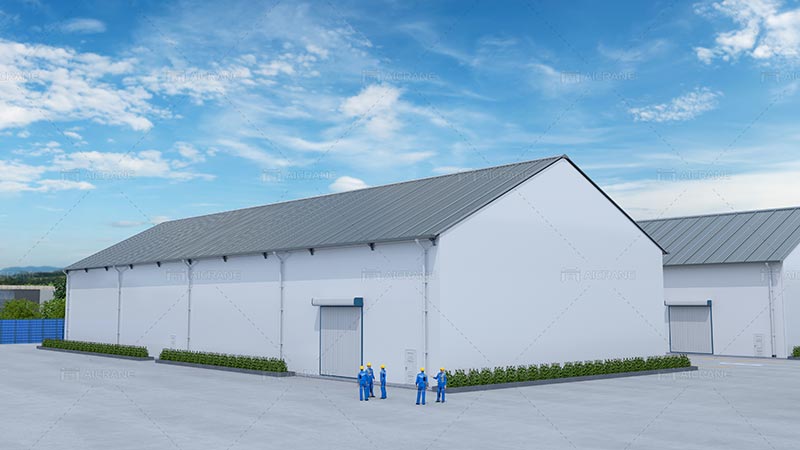Steel structure warehouses are popular in industrial and commercial construction due to their durability, flexibility, and efficiency. However, managing construction costs while maintaining high quality can be challenging. This article explores effective strategies to reduce costs in steel structure warehouse projects, ensuring a balance between budget and performance.

1. Efficient Design and Planning
Optimized Design: The design phase is crucial for controlling costs. Utilize software tools for structural analysis and design optimization. Incorporate standard designs and modular elements where possible to reduce engineering and fabrication costs. Pre-engineered buildings, which use standardized components, often offer cost savings compared to custom designs.
Project Planning: A well-structured project plan can prevent delays and cost overruns. Detailed planning includes scheduling, resource allocation, and risk management. Implement project management software to track progress, manage resources, and adjust plans as needed. Early planning for logistics, site preparation, and procurement can also minimize unforeseen expenses.
2. Material Selection and Procurement
Cost-Effective Materials: Steel prices can fluctuate, so securing materials at the best price requires strategic procurement. Purchase steel in bulk or negotiate long-term contracts with suppliers to lock in favorable rates. Consider using secondary steel or recycled materials when appropriate, as these can be more cost-effective without compromising quality.
Bulk Purchasing: Ordering materials in bulk reduces unit costs and transportation expenses. Coordinate with suppliers to buy in large quantities and take advantage of economies of scale. However, balance this with storage costs and potential delays in material delivery.
3. Prefabrication and Modular Construction
Prefabrication: Prefabricated steel structure components can significantly reduce construction time and labor costs. By assembling parts of the warehouse off-site, you minimize on-site labor and potential delays caused by weather or site conditions. Prefabricated steel sections, roofing panels, and other elements can streamline the construction process.
Modular Construction: Modular construction involves assembling pre-built modules on-site. This approach not only accelerates construction but also improves quality control and reduces waste. Modules are manufactured in a controlled environment, which enhances precision and reduces the likelihood of costly rework.

4. Efficient Labor Management
Skilled Workforce: Employ a skilled workforce with experience in steel structure construction. Investing in qualified labor can reduce errors and rework, ultimately saving costs. Train workers on best practices and safety procedures to minimize accidents and downtime.
Labor Scheduling: Optimize labor schedules to match project needs. Avoid overstaffing, which can lead to unnecessary costs, and ensure that labor is available when needed to prevent delays. Implement effective project management techniques to coordinate labor activities and maintain productivity.
5. Streamlined Construction Processes
Lean Construction Techniques: Apply lean construction principles to eliminate waste and enhance efficiency. Focus on value-added activities and minimize non-value-added tasks. Implementing just-in-time delivery for materials and equipment can reduce inventory costs and prevent site congestion.
On-Site Efficiency: Improve on-site processes by adopting efficient construction methods. For example, use Aicrane cranes and other equipment to handle large components, reducing manual labor and speeding up assembly. Implement standardized procedures for tasks such as welding, bolting, and painting to ensure consistency and quality.
6. Effective Project Management
Cost Tracking: Monitor project costs closely using cost tracking tools. Regularly review expenses and compare them to the budget. Identify and address any deviations promptly to prevent cost overruns.
Change Management: Changes to the project scope can lead to increased costs. Establish a formal change management process to evaluate and approve changes. Ensure that any modifications are necessary and justified, and assess their impact on the overall budget before proceeding.
7. Energy Efficiency and Sustainability
Energy-Efficient Design: Incorporate energy-efficient features into the warehouse design to reduce long-term operational costs. Use energy-efficient lighting, insulation, and HVAC systems. Implementing these features can lower utility bills and improve the building’s overall sustainability.
Sustainable Materials: Opt for sustainable materials and construction practices that reduce environmental impact. Using recycled steel or incorporating green building certifications can enhance the project’s value and appeal, potentially attracting incentives or tax benefits.
8. Maintenance and Lifecycle Costs
Durability: Choose high-quality steel structure and coatings to ensure the warehouse’s durability and reduce maintenance needs. Investing in robust materials can lead to lower maintenance and repair costs over the building’s lifespan.
Lifecycle Cost Analysis: Conduct a lifecycle cost analysis to evaluate the long-term costs associated with different design and material choices. Consider factors such as maintenance, energy consumption, and potential repairs when making decisions. This analysis helps in selecting options that offer the best overall value.
9. Utilizing Technology
Building Information Modeling (BIM): BIM technology can enhance the design and construction process by providing detailed 3D models of the warehouse. This allows for better visualization, coordination, and clash detection, reducing errors and rework.
Construction Management Software: Use construction management software to streamline project workflows. These tools can help with budgeting, scheduling, and resource management, improving overall efficiency and cost control.
Conclusion
Reducing costs in steel structure warehouse projects requires a multifaceted approach, from efficient design and planning to effective material procurement and labor management. By leveraging technology, adopting prefabrication techniques, and focusing on long-term value, you can achieve significant cost savings while maintaining high quality and performance. Implementing these strategies will not only help in managing your budget but also enhance the overall success of your warehouse construction project.